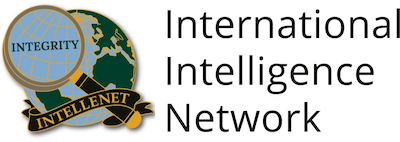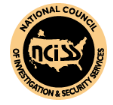Lying is more common than most people think—the average person tells one to two lies per day. While small fibs may be harmless, lies in criminal investigations, business negotiations, or personal relationships can have serious consequences.
At Bulldog PI, we specialize in uncovering the truth through expert lie detection techniques, body language analysis, and investigative strategies. Whether you’re dealing with a cheating spouse, a dishonest employee, or a suspicious business partner, understanding deceptive body language can give you the upper hand.
In this guide, we’ll break down the scientific and investigative techniques used to detect deception—including facial expressions, body movements, speech patterns, and voice changes—so you can recognize the signs of a lie in real time.
Understanding Deception: The Science Behind Lying
Before diving into specific signs, it’s crucial to understand that lie detection is not foolproof. No single sign indicates deception on its own. However, when multiple red flags appear together, the likelihood of dishonesty increases significantly.
Key Psychological and Behavioral Principles Behind Lying
- Cognitive Load Theory: Lying requires more mental effort than telling the truth, which can lead to noticeable behavioral changes.
- Fight-or-Flight Response: Fear of getting caught can trigger physiological stress responses, such as sweating or nervous gestures.
- Microexpressions: Brief, involuntary facial expressions can reveal true emotions before a person consciously controls them.
By using a combination of these psychological insights and investigative techniques, private investigators can analyze deception more effectively.
1. Facial Expressions: How a Liar’s Face Betrays Them
The face is one of the most revealing indicators of deception. While skilled liars may attempt to control their expressions, involuntary microexpressions and physiological reactions often give them away.
Common Facial Signs of Lying:
- Eye Contact Changes – Liars may briefly look away while speaking or, conversely, stare too intensely to overcompensate.
- Lip Compression – Pressing lips together, rolling lips inward, or biting the lip can indicate hesitation or withholding information.
- Excessive Blinking or Squinting – Increased blinking or squinting may be a stress response.
- Sweating in the T-Zone – Sudden perspiration on the forehead, nose, or upper lip suggests nervousness.
Expert Tip: Watch for microexpressions—brief, involuntary expressions of guilt, fear, or surprise that contradict verbal statements.
2. Body Language: Physical Cues That Reveal Lies
When someone lies, their body often reacts before their words do. Investigators pay close attention to gestures, posture, and movement patterns to detect deception.
Common Body Language Cues of a Liar:
- Delayed Hand Gestures – Truthful people naturally gesture while speaking. Liars tend to use hand gestures after they speak, as if rehearsing their response.
- Palm-Hiding Behavior – Turning palms inward or keeping hands in pockets can indicate concealment or deception.
- Foot Movement – Shuffling feet, tapping toes, or pointing feet toward an exit suggests a subconscious desire to escape the conversation.
- Body Rocking or Fidgeting – Increased movement, like shifting weight from side to side or scratching, often signals discomfort.
Expert Tip: A deceptive person’s body may freeze momentarily before answering a critical question—a sign of internal conflict.
3. Speech Patterns: Verbal Red Flags That Indicate Lying
A liar’s words often betray them. Beyond what they say, private investigators analyze how they say it, looking for inconsistencies, contradictions, and defensive language.
Common Verbal Signs of Lying:
- Excessive Qualifiers – Phrases like “To be honest,” “I swear,” or “Believe me” are often used as overcompensation.
- Filler Words – Increased use of “um,” “uh,” or “like” may indicate stalling for time.
- Hedging Statements – Vague language, such as “I guess” or “Maybe,” can be a sign of evasion.
- Self-Corrections – Liars frequently start to say one thing, then correct themselves mid-sentence, revealing internal conflict. (Example: “I didn’t—uh, I mean, I did see him yesterday.”)
Expert Tip: Ask the same question multiple times in different ways. Liars struggle to maintain consistency over time.
4. Tone of Voice: How Vocal Changes Can Reveal Deception
Even when words seem convincing, a liar’s tone, pitch, and speaking speed can expose dishonesty.
Common Vocal Indicators of Lying:
- Higher-Pitched Voice – Stress and nervousness cause the vocal cords to tighten, leading to a higher pitch.
- Voice Cracks or Throat Clearing – Increased dryness in the throat is a physiological response to anxiety.
- Unnatural Volume Changes – Some liars unconsciously speak louder when trying to sound convincing.
Expert Tip: A sudden pause before answering may indicate mental effort to construct a lie.
How Private Investigators Use Body Language to Detect Lies
At Bulldog PI, we use a multi-layered approach to lie detection, combining:
- Expert Body Language Analysis
- Behavioral Interviewing Techniques
- Surveillance & Digital Evidence Review
- Polygraph & Forensic Psychology Consultations
Unlike Hollywood portrayals, professional lie detection is based on science, training, and experience, not just gut feelings.
Can You Spot a Liar?
While these techniques can help you recognize deception, lie detection is a skill that requires experience and training. If you’re dealing with a serious case of potential fraud, infidelity, or dishonesty, hiring a professional private investigator is the best way to uncover the truth.
Our investigative services are available in Myrtle Beach, Charleston, Columbia, Greenville, and Spartanburg.
Contact us today for a confidential consultation.










